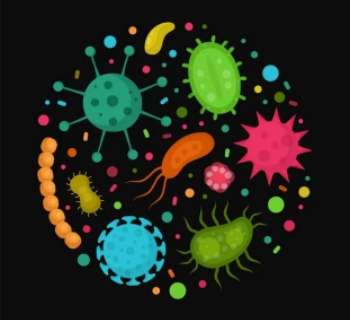N. N, N-Trimethyldocosan-1-ammonium chloride is a quaternary ammonium salt compound characterized by three methyl groups and an ammonium group connected to the first carbon atom of long-chain alkanes. The ammonium group carries a positive charge and forms a salt with chloride ions. This compound typically has excellent surface activity and antibacterial properties, making it widely used in detergents, disinfectants, and cosmetics. Due to its long-chain alkane structure, it also has good wetting, permeation, and dispersion abilities, which can effectively remove stains and oils. In addition, N, N, N-Trimethyldocosan-1-amine chloride also exhibits good biocompatibility and stability, demonstrating good safety and reliability in applications.
1. Surface activity: As a quaternary ammonium salt, it has good surface activity and can reduce the surface tension of water. Therefore, it is often used as a surfactant or emulsifier, playing a role in detergents, cosmetics, and personal care products.
2. Antibacterial performance: Due to its quaternary ammonium group, N, N, N, N-Trimethyldocosan-1-ammonium chloride has certain antibacterial properties. It can sabotage the cell membrane of bacteria, thereby killing or inhibiting their growth. This gives it potential application value in disinfection products, antibacterial agents, and hygiene products.
3. Stability: Under appropriate storage conditions, N, N, N-Trimethyldocosan-1-amine chloride is relatively stable and not easily decomposed. However, high temperatures or strong acidic or alkaline environments may affect its stability.
4. Toxicity: This compound is usually considered relatively low toxicity, but it is still recommended to follow appropriate safety measures. Long-term exposure to large amounts may irritate the skin, eyes, or respiratory system.
5. Environmental impact: The biodegradability of N, N, N-Trimethyldocosan-1-amine chloride may be poor, which may have a certain impact on the aquatic environment. Therefore, it is recommended to take environmental measures when using and handling this compound.
1.Antibacterial agent: N, N, N-Trimethyldocosan-1-amine chloride has broad-spectrum antibacterial activity and can effectively constrict the growth of various bacteria and microorganisms. It is often used to disinfect medical facilities, surgical instruments, skin, and wounds. It can also be used as an antibacterial ingredient in personal care tailors, such as hand sanitizers, wipes, and skincare products.

N. N, N-Trimethyldocosan-1-amine chloride can effectively inhibit the growth of various bacteria and microorganisms
2.Anti-static agent: This compound has excellent anti-static performance due to its quaternary ammonium salt structure. It can be used for anti-static treatment of materials such as plastic products, textiles, and paper to prevent problems caused by static electricity, such as dust adsorption and electric shock.

N. N, N-Trimethyldocosan-1-amine chloride used as an antistatic agent
3.Surfactants: N, N, N-Trimethyldocosan-1-amine chloride has good surface activity and can be used as emulsifiers, dispersants, and wetting agents. In industries such as coatings, inks, and cosmetics, it can improve the stability and usability of products.

N. N, N-Trimethyldocosan-1-amine chloride is used in industries such as coatings and inks
4.Textile additives: This compound can be used for softening, anti-static, and antibacterial treatment of textiles. Combining with fibers can endow textiles with good softness, anti-static properties, and antibacterial properties.

N. N, N-Trimethyldocosan-1-amine chloride used as a textile additive
5.Oilfield chemicals: In the petroleum industry, N, N, N-Trimethyldocosan-1-amine chloride can be used as a component of oilfield chemicals, such as drilling fluids, completion fluids, and oil recovery agents. It can improve oil extraction efficiency and reduce friction and wear during drilling.

Company Profile
NANOTRUN(www.rboschco.com) is a trusted global chemical material supplier & manufacturer with over 12-year-experience in providing super high-quality chemicals and nanomaterials, including boride powder, nitride powder, graphite powder, sulfide powder, 3D printing powder, etc.
The company has a professional technical department and Quality Supervision Department, a well-equipped laboratory, and equipped with advanced testing equipment and after-sales customer service center.
If you are looking for high-quality N,N,N-Trimethyldocosan-1-Aminium Chloride , please feel free to contact us or click on the needed products to send an inquiry.
Payment Term
L/C, T/T, Western Union, Paypal, Credit Card etc.

Shipment Term
By sea, by air, by express, as customers request.
Storage Conditions:
1. Temperature control:This compound should be stored in a dry, cool, and well-ventilated place, away from direct heat sources and direct sunlight. The advocate storage temperature is between 0 ° C and 30 ° C to maintain stability and extend its shelf life.
2. Humidity control: As this compound is prone to moisture absorption, it is necessary to ensure that the relative humidity of the reserve environment is low to prevent quality changes and performance degradation caused by moisture absorption.
3. Packaging and containers: Sealed, moisture-proof, and lightproof containers should store N, N, N-Trimethyldocosan-1-amine chloride. Using glass bottles or plastic bottles with tightly sealed caps is usually recommended.
4. Avoid contamination: When storing, avoid contact with incompatible chemicals, pollutants, and impurities to prevent chemical reactions or contamination.
5. Fire and explosion prevention: Although N, N, N-Trimethyldocosan-1-amine chloride itself may not be flammable or explosive, it is recommended to keep the storage area away from ignition sources, static sparks and other potential ignition sources.
6. Inventory management and identification: An appropriate inventory management system should be established to ensure that the first in, first out (FIFO) principle is followed and to avoid quality degradation caused by prolonged storage. At the same time, the container should indicate the compound's name, batch number, production date, and expiration date.
7. Personnel training: Personnel responsible for storing and handling N, N, N-Trimethyldocosan-1-amine chloride should receive appropriate training to understand the properties of the compound, safe operating procedures, and emergency measures.
Q1
What are the wetting and emulsifying properties of TMDC as a surfactant?
Re:TMDC, as a surfactant, exhibits excellent wetting and emulsifying properties. The stasis between hydrophilic and hydrophobic groups in its molecular structure enables it to reduce water's surface tension effectively and promote the oil-water interface's stability. This makes TMDC excellent in wetting various solid surfaces, solubilizing oils and dispersing oil droplets, and is widely used in detergents, emulsifiers, dispersants, and so on.
Q2
How do the cationic properties of TMDC affect its performance in practical applications?
Re:The cationic properties of TMDC bring unique advantages in practical applications. Cationic groups can strongly interact with anionic groups, enhancing their adsorption and stability at the interface. This property enables TMDC to produce synergistic effects when mixed with other anionic surfactants, improving the product's overall performance. In addition, the cationic properties also endow TMDC with certain antibacterial properties, making it have certain application value in hygiene and personal care products.
Q3
How to evaluate the biocompatibility and safety of TMDC?
Re:The biocompatibility and safety assessment of TMDC typically involves multiple aspects. Firstly, by conducting in vitro cytotoxicity tests, the impact of TMDC on cell growth and viability can be evaluated, thereby preliminarily assessing its biocompatibility. Secondly, animal and human experiments are also important means to evaluate the safety of TMDC, which can observe its metabolism, distribution, and excretion in the organism and whether it causes toxic or allergic reactions. In addition, conducting systematic research on the acute toxicity, chronic toxicity, mutagenicity, etc., of TMDC is also a necessary step in evaluating its safety. Based on these evaluation results, a comprehensive evaluation of the biocompatibility and safety of TMDC can be made.
Q4
What are the unique advantages of TMDC compared to other cationic surfactants?
Re:TMDC has some unique advantages compared to other cationic surfactants. Firstly, the long-chain alkane groups in its molecular structure endow it with good hydrophobicity and stability, making its performance at the oil-water interface more outstanding. Secondly, the cationic properties of TMDC enable it to have synergistic effects with various anionic components, improving the product's overall performance. In addition, TMDC also has low irritation and good biocompatibility, making it widely used in cosmetics, personal hygiene products, and other fields. These unique advantages give TMDC a certain level of competitiveness in the market.
Q5
How stable is TMDC, especially under different pH and temperature conditions?
Re:TMDC exhibits excellent stability under different pH and temperature conditions. The chemical bonds and functional groups in its molecular structure have high stability and can maintain performance stability over a wide pH range. Meanwhile, TMDC has a high melting point and can remain solid at high temperatures, making it less prone to decomposition or deactivation. These characteristics enable TMDC to maintain stable performance in extreme environments, making it suitable for various practical application scenarios. However, it is still recommended to use TMDC under recommended usage conditions to ensure optimal stability and performance.
N,N,N-Trimethyldocosan-1-aminium chloride Properties | |
| Other Names | N/A |
| CAS No. | 17301-53-0 |
| Compound Formula | N/A |
| Molecular Weight | 404.156 |
| Appearance | NA |
| Melting Point | N/A |
| Boiling Point | N/A |
| Density | N/A |
| Solubility in H2O | N/A |
| Exact Mass | N/A |
N,N,N-Trimethyldocosan-1-aminium chloride & Safety Information | |
| Signal Word | N/A |
| Hazard Statements | N/A |
| Hazard Codes | N/A |
| Risk Codes | N/A |
| Safety Statements | N/A |
| Transport Information | N/A |




